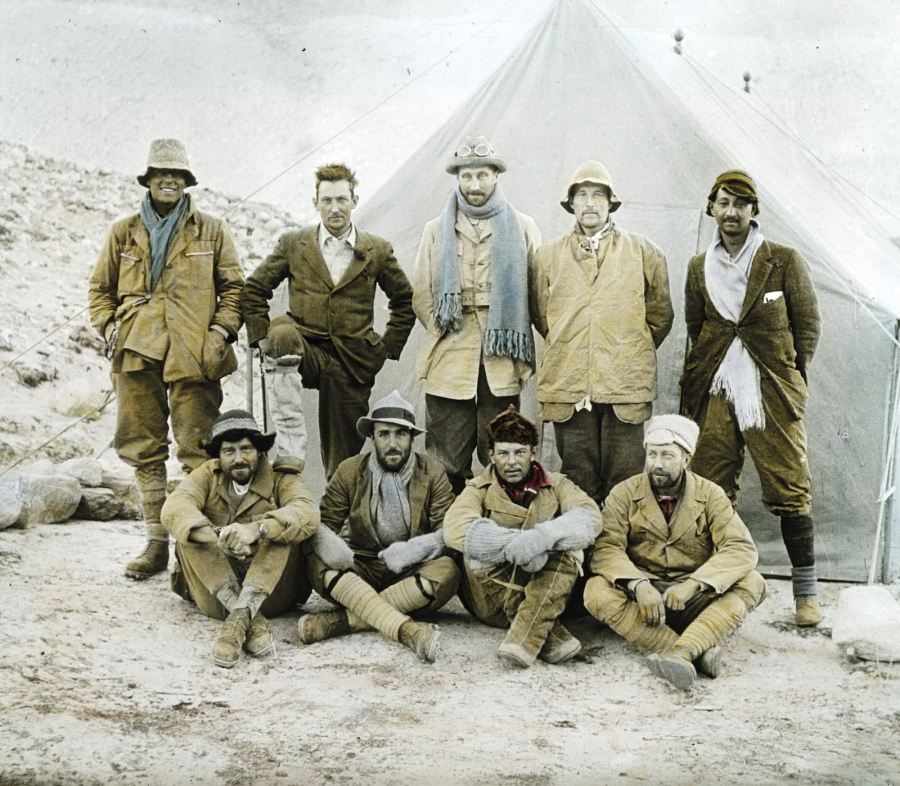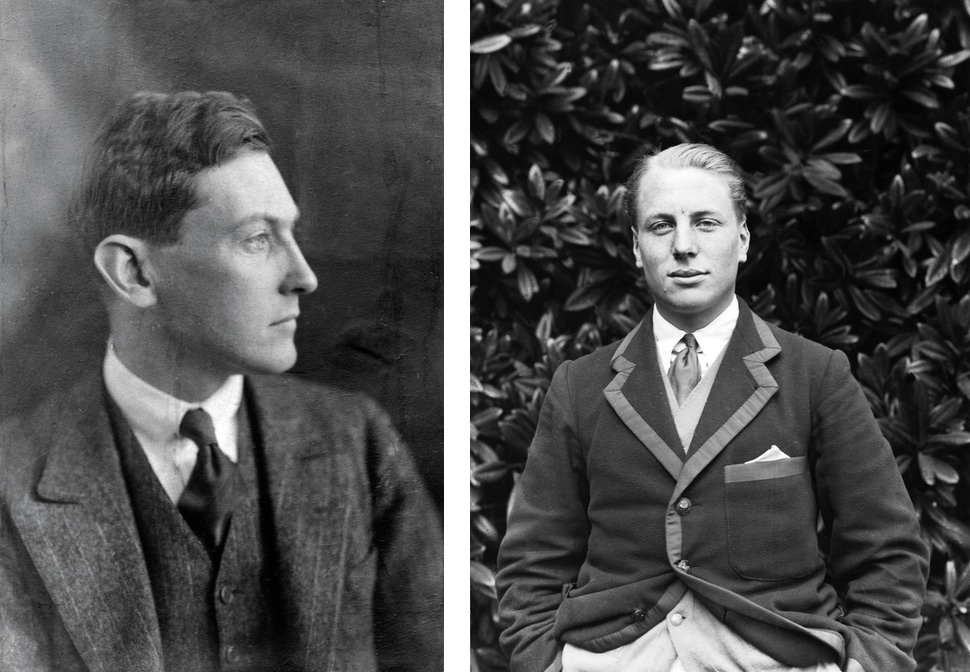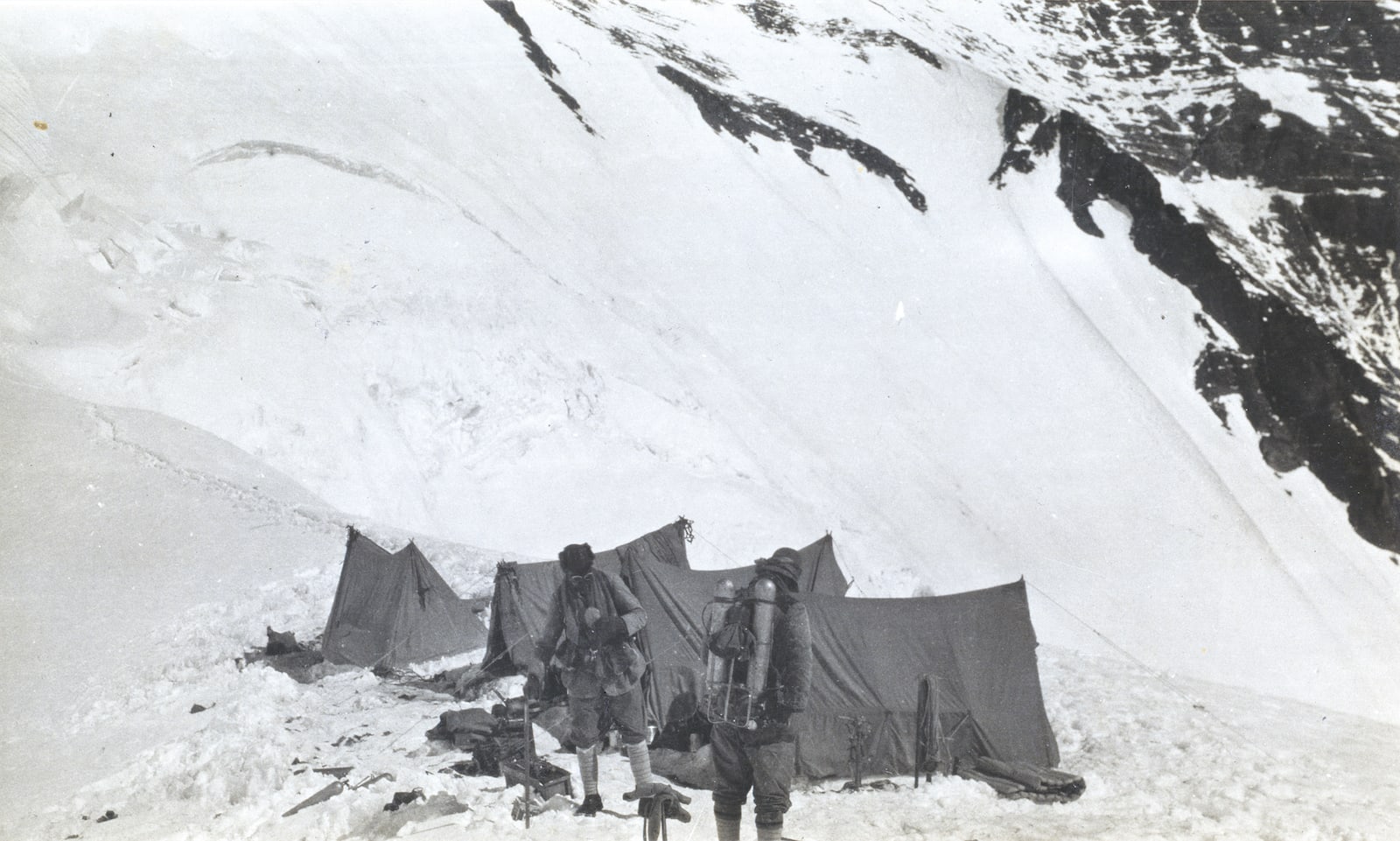Edmund Hillary and Tenzing Norgay were the first to climb Everst, but almost 30 years earlier two men died trying to reach the summit. In this extract from Edmund Hillary – A Biography, author Michael Gill relates the story of Mallory and Irvine.
Having travelled together by boat to India, Mallory wrote that Irvine was ‘one to depend on for everything perhaps except conversation’, which was not required on the last thousand feet of Everest anyway. He might have added that Irvine had not actually done any mountaineering – but did it matter with Mallory in the lead?
Mallory had by now put together a strong plan. He and Irvine would be using oxygen all the way from Camp 3 at 21,000ft through to the summit four days later. Unlike the first and second assaults which had lacked the Sherpa numbers to carry oxygen, this time Camps 4, 5 and 6 would all be in place, and stocked with food, fuel and oxygen. Mallory had spoken dismissively of oxygen in the past but by June 1924 he was a convert, and he knew that Irvine could mend its pipes and valves.
Mallory had correctly identified the best route from below and its main problems. From Camp 6 at 27,000ft they would not cross into the Norton Couloir but rather would climb to the crest of the north ridge which they would follow to the First Step. This, he believed, could be bypassed on its right, taking them to the foot of the Second Step. This piece of rock looked altogether more difficult, an almost vertical, 100ft buttress with no obvious way of sidling around it – but it might be easier than it looked from a distance. Above the Second Step there was a small, benign-looking Third Step but no other apparent obstacles before the summit. The weather was fine and apart from intermittent cloud would remain so throughout their summit day.
The two men never returned to tell their story, but a part of what happened on 8 June has been pieced together from evidence accumulated over the years. As they settled into Camp 6, Mallory wrote two notes to be delivered by his returning Sherpas to those down at Camp 4. The first read:
Dear Odell, We’re awfully sorry to have left things in such a mess – our Unna cooker rolled down the slope at the last moment … To here on 90 atmospheres for the two days – so we’ll probably go on two cylinders – but it’s a bloody load for climbing. Perfect weather for the job.
Yours ever, G. Mallory
And to Captain Noel, the photographer watching from the North Col with his cine camera and telephoto lens, he gave some advice about when and where to catch their movements on film:
Dear Noel, We’ll probably start early tomorrow in order to have clear weather. It won’t be too early to start looking out for us either crossing the rock band under the pyramid or going up skyline at 8.0 pm. [sic: he means a.m.]
Yours ever, G. Mallory
Their oxygen sets carried two bottles each. At the set flow rate of 2.2 L/min (litres per minute), these would have lasted seven hours, which at a theoretical climbing rate of 300ft/hr would have got them to the summit, assuming they were not slowed by climbing difficulties of any sort.
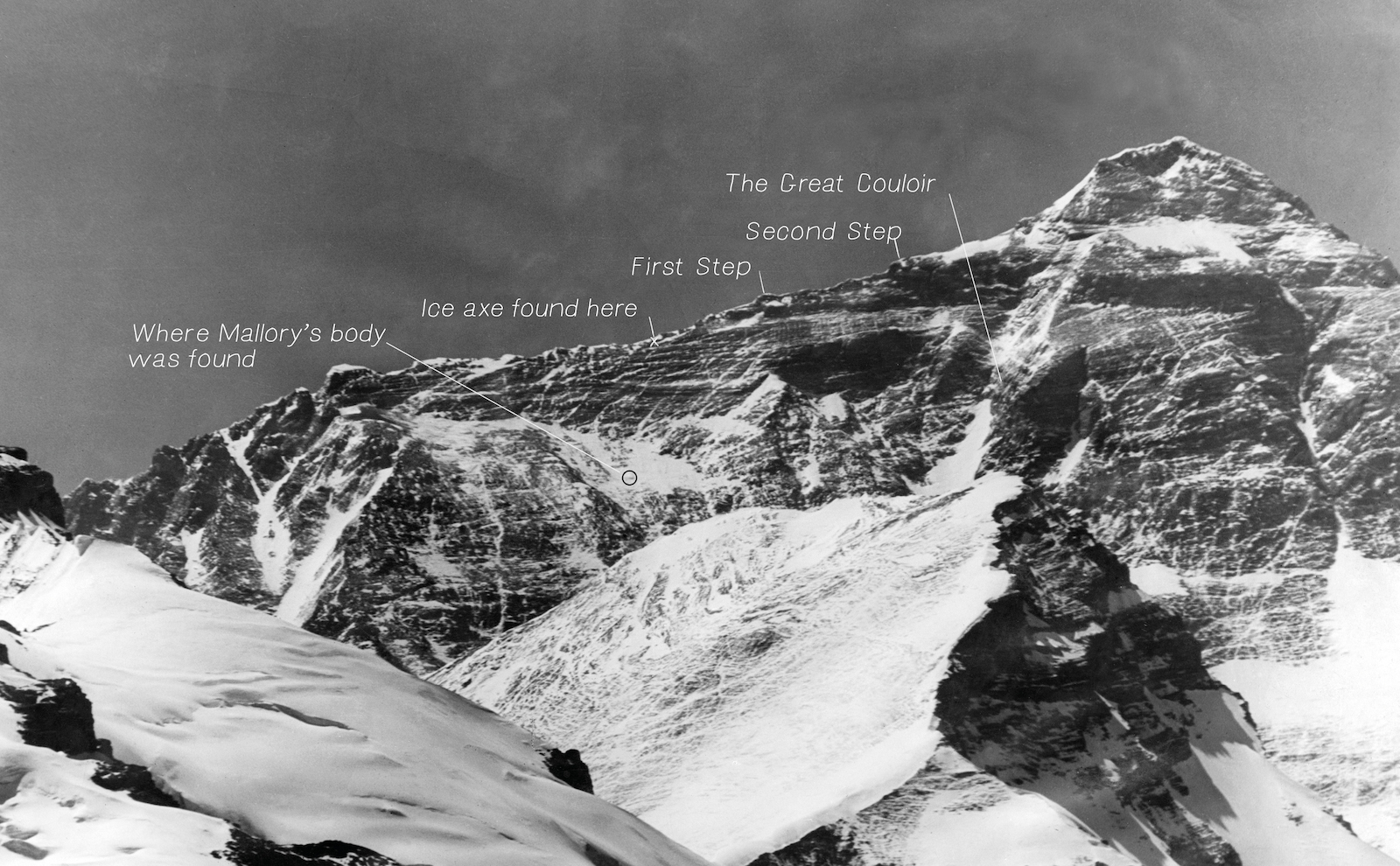
The North Face of Everest in 1933 showing the First and Second Steps and where the Mallory/Irvine ice axe was found.The circle marks the site where Mallory’s body was found in 1999 by the Mallory and Irvine Expedition at 26,760 feet. The expeditions of 1924 and 1933 traversed into the Great Couloir at a height of 28,130 feet before being brought to a halt by exhaustion and difficult rock. On his oxygenless solo ascent in 1980 Reinhold Messner also traversed into the couloir before continuing to the summit.
Image: Royal Geographical Society
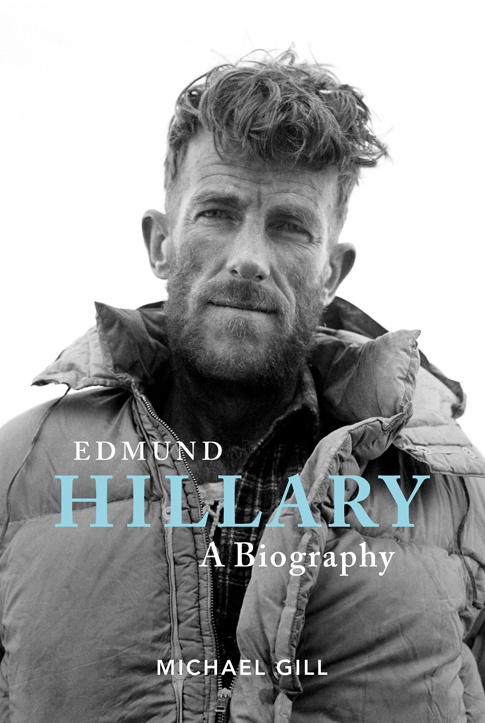
Edmund Hillary – A Biography by Michael Gill is available now from Vertebrate Publishing.
One of their four discarded oxygen bottles was found at 27,800ft near the foot of the First Step, though with no indication whether the men were on their way up or down. In 1933, one of their ice-axes was found 200 metres from the foot of the First Step. It is hard to see why either climber would deliberately abandon an ice-axe and Wyn-Harris, who found it, believed the most likely explanation was that one of them had slipped and fallen here.
Dramatic proof that they had fallen came in 1999 when the Mallory and Irvine Research Expedition found Mallory’s body on the mountainside some 300 metres lower than the axe. The first clue had come from a report in 1979 that a Chinese climber called Wang had told a companion four years earlier that, while at the 1975 Chinese Camp 6, he had stumbled on the antique body of ‘English dead’. Adding to the mystery was that Wang was swept to his death in an avalanche the next day. In 1999, the Mallory and Irvine Research Expedition located the site of this Camp 6. They found themselves on a terrace which was ‘a virtual graveyard of mangled, frozen bodies … a kind of collection zone for fallen climbers’. Those first examined wore modern clothes and equipment. But lower down, where the edge of the terrace dropped away, they saw ‘a patch of white that was whiter than the rock around it and whiter than the snow’. It was another body, but completely different from the others. This one was wearing the clothes of 1924: woollen cloth, hob-nailed boots, fur-lined leather helmet. A manila rope around his waist was frayed, showing it had snapped during a fall. The legs, one of them broken, revealed bare bone, as did the face, but the back, its skin bleached white, was miraculously preserved as if made of marble. The arms were extended, fingers clawing into the slope as if to arrest a fall. There was a hole punched in the skull. Labels on the clothes read G. Mallory. The evidence showed that he had been on his way down the mountain and not using oxygen when he fell.
So it was known now that they had fallen rather than died of cold and lack of oxygen. No one could know who had slipped first, but the inexperienced Irvine would have been more likely to choose a wrong foothold than highly experienced Mallory. You can almost see, and hear, them. Two exhausted men stumbling down, roped together, their oxygen at an end. Irvine misjudges a downward-sloping ledge and, in an instant, his feet have shot from under him and he is gathering speed down slabs greased with snow. Mallory braces himself but his footholds on rock cannot withstand the jerk that drags him off. Now they are both falling with sickening speed. The rope snags on a rock and snaps. Mallory comes to rest in the graveyard below; Irvine falls all the way down the North Face.
But had they reached the summit of Everest before their tragic end? The last and most enigmatic piece of evidence comes from Odell, and that was a sighting at 12.50 p.m. on the summit day of two dots he was sure were the figures of Mallory and Irvine.
“It seems likely that if the top pitch of the Second Step were in the thick air of North Wales, Mallory could have climbed it.Whether he could have climbed it at 28,300ft on Everest, no one can say”
Odell was the one-man support team who over three days, from 8–10 June, climbed twice, without oxygen and with apparent ease, the 4000ft between Camps 4 and 6. He was on his own except at Camp 4, and wrote of his experiences almost mystically. At Camp 5 he described the sunset:
The fact that I was quite alone certainly enhanced the impressiveness of the scene. To the westward was a savagely wild jumble of peaks … the brilliant opalescence of the far northern horizon of Central Tibet, above which the sharp-cut crests of distant peaks thrust their purple fangs … an ineffable transcendent experience that can never fade from memory.
Of his last sighting of Mallory and Irvine, Odell wrote in his diary that night: ‘At 12.50 saw M&I on ridge nearing base of final pyramid. A few days later, he wrote a more detailed account for a press dispatch:
There was a sudden clearing of the atmosphere above me and the entire summit ridge and final peak of Everest were unveiled. My eyes became fixed on one tiny black spot silhouetted on a small snow-crest beneath a rock-step in the ridge; the black spot moved. Another black spot became apparent and moved up the snow to join the other on the crest. The first then approached the great rock step and shortly emerged at the top; the second did likewise. Then the whole fascinating vision vanished, enveloped in a cloud once more. There was but one explanation. It was Mallory and his companion moving, as I could see even at that great distance, with considerable alacrity …
At this stage, Odell did not specify which rock step he was looking at, whether the easy First Step, the difficult Second Step, or the easy Third Step closer to the summit. In 1933, Smythe and Shipton, climbing towards Camp 6, deepened the uncertainty by suggesting that Odell had been looking at rocks, not men:
Shipton suddenly stopped and pointed. ‘There go Wyn and Waggers on the second step,’ he exclaimed. Sure enough, there were two little dots on a steep snow-slope at the foot of the cliff. We stared hard at them and could have sworn they moved. Then simultaneously, we realized that they were rocks. And, strangely enough, there are two more rocks perched on a snow-slope immediately above the step; these again looked like men and appeared to move when stared at … Is it possible that Odell was similarly tricked by his eyes? His view was between shifting mists and lasted only a minute or two. The effects of altitude, tiredness, and the strain of the climbing combine to impair the efficiency of vision …
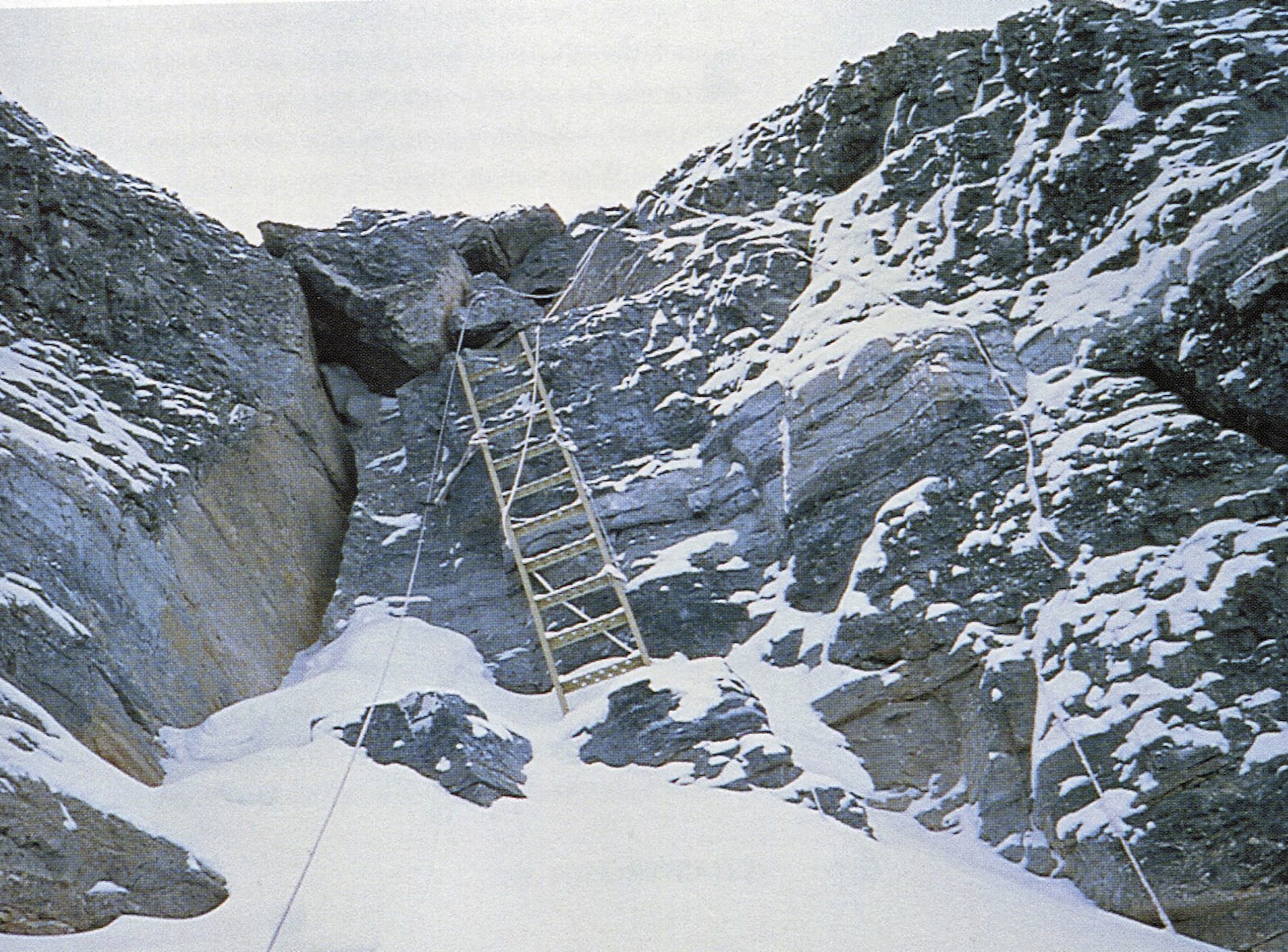
The crucial pitch on the Second Step photographed in 1999. The low angle of view makes the rock look deceptively easier than it is. The five-metre ladder was fixed in place by the 1975 Chinese expedition and has been in use ever since. Conrad Anker’s free climb of the step used the broad crack to the left of the ladder.
Image: Dave Hahn, 1999 Mallory and Irvine Expedition
Eventually Odell made a decision that indeed he had been looking at the Second Step, though the speed with which his two climbers had surmounted it suggested they were on the easier Third Step with the summit quite close. Did Mallory have the technical skill to climb the Second Step? In 1999 a top American climber, Conrad Anker, free-climbed it as if he were Mallory in 1924. The obvious line was an off-width crack, wide enough to take arms and legs. Anker was soon up and on to easier rock above. He rated it as Yosemite grade 5.8, which is defined as ‘within the range of the average weekend climber’. The average weekender in Yosemite climbs to a high standard using modern equipment; nevertheless, it seems likely that if the top pitch of the Second Step were in the thick air of North Wales, Mallory could have climbed it.
Whether he could have climbed it at 28,300ft on Everest, no one can say. They had oxygen but of a primitive sort. To reach the summit it would need to have been a day of miracles, but miracles do happen. Although it was the Chinese in 1960 who first documented the ascent of this route, in climbing legend this stretch of mountain will always belong to Mallory and Irvine.
Edmund Hillary – A Biography by Michael Gill was published in March 2019 by Vertebrate Publishing. Signed special edition hardbacks are available to order now (£24).
Header image: The 1924 party. Standing (L to R): Irvine, Mallory, Norton, Odell and MacDonald; Seated: Shebbeare, Bruce, Somervell and Beetham. John Noel.

